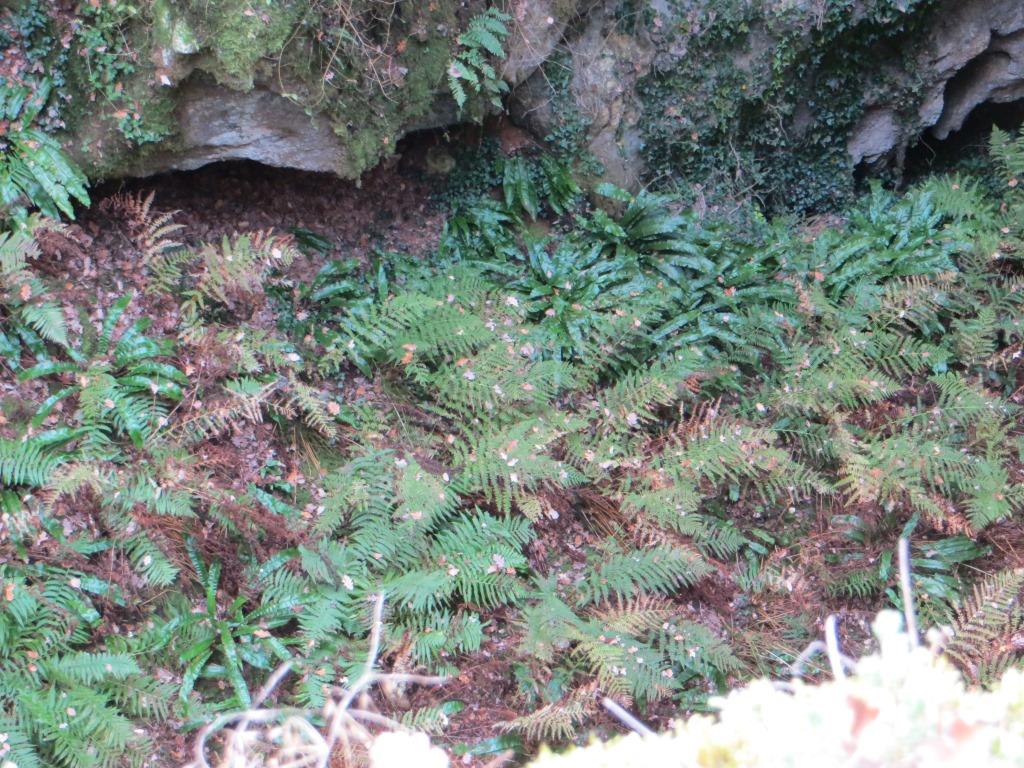
Imagine yourself at the bottom of this 30-metre deep hole, hacking away at the white rock with a pickaxe and piling the spoil into a wooden bucket. It’s damp. Visibility is assisted only by the dim light of lanterns. The reddish clay coats your boots, clothes and hands. What are you mining? Precious metals? Gemstones? Coal? None of those but, nonetheless, a kind of hidden treasure that inspired its own “gold rush” – phosphate.
Banal but precious
This unromantic substance is a major ingredient in fertilisers. During the 1860s phosphates were found to exist in a small area of the Quercy region in quantities worth exploiting. But it was a very short-lived industry. The first mines opened around 1870 and by 1887 their heyday was virtually over.

The phosphate deposits were discovered almost by accident. While walking in the area, a chemist named Jean-André Poumarède noticed that the crops in some fields grew more abundantly than in others. Curious, he took soil and rock samples and had them analysed. They were found to contain significant deposits of phosphates.

This week, we visited one of the old phosphate mines, just outside Bach in the Lot: les Phosphatières du Cloup d’Aural. A guide escorts you around the site and explains its history. She was very good.

The site has great geological, paleontological and historical significance and has been on my bucket list for some time. So we combined it with a lunch with friends at Monique Valette’s restaurant Lou Bourdié, in Bach.


Formed over millions of years
Following Poumarède’s discovery in 1865, people recognised that a narrow strip of land from the Célé Valley down to the Aveyron north of Bruniquel was riddled with these fertile pockets. Their origin dates back to the time, many millions of years ago, when the whole area was covered by a tropical sea, which advanced and receded several times. The bones of the sea’s rich animal life sedimented on the sea bed and hardened into rock. By complex processes of erosion, underground cavities filled up with clay, pulverised rock and animal bones and the pockets rich in phosphates were formed.

I have just (over) simplified a process that took place during hundreds of millions of years and was much more complicated than I can convey. Suffice it to say that by geological chance, the cavities in this area were preserved close to the surface. Some 300 of them were later exploited.
Fleeting prosperity
In the late 19th century, the causse had a much higher population than it does today. People cultivated vines, grew cereals and reared sheep. The trees that cover the area now are relatively new. Following the discovery of phosphates, many local people went to work in the mines, from which the phosphate was exported to England where the demand was greatest.


Large quantities of fossils also lay buried amid the clay. A lot of them were simply ground up with the rock. But a lucrative clandestine trade in fossils also developed and many of them disappeared into naturalists’ private collections.
The region’s prosperity was short lived, hit by a double whammy. The phosphate reserves were quickly exhausted or became too difficult to reach and richer reserves came to light elsewhere in the world. The locals returned to their vines, but the phylloxera bug arrived to devastate the vineyards. Money squirreled away during the fat phosphate years went on new vine stock that became diseased in its turn. The causse began to empty as people abandoned the land and moved to the towns.

Today, little is left of this once-thriving industry except a few rusty rails and a lot of holes in the ground. Some of the phosphatières regrettably became rubbish dumps. Happily, though, their importance was recognised during the 20th century. They are almost unique depositories of a complete fossil record. They also have a distinct microclimate favouring a range of flora not found elsewhere on the parched causse.

We got there just in time for this year. The site is closed to the public from 11th November to 1st April. In winter, it’s too hazardous. It’s best to go when the weather is dry, since you walk down into the cavity via steps that quickly become slippery. Take warm clothes, since the temperature never rises above about 15 C, and sturdy shoes.

You might also like:
Wine Blight: How the French Wine Industry was almost Wiped Out
Bach, an Ancient Village on the Causse de Limogne
Getting the blues: the pastel trade in southwest France
Copyright © 2017 Life on La Lune, all rights reserved
[…] Hidden Treasure in Quercy […]
LikeLike
[…] Hidden Treasure in Quercy […]
LikeLike
This is totally fascinating – thank you!! I guess a lot of the phosphate would have been used for the potato crops in the UK!!
LikeLiked by 1 person
I would imagine so, among other things. The phosphates were mined and ground into powder in France but conditioned in England. Richer deposits that were easier to exploit were found in the US and North Africa and that was the death knell for the industry around here.
LikeLiked by 1 person
As so often, it’s down to profitability….
LikeLiked by 1 person
Very interesting, you are a mine of information. Sorry, couldn’t resist the obvious pun! 🙂
LikeLiked by 1 person
Ha, ha! I had to dig deep for this post…
LikeLike
Another great article! Weather here in Toronto is starting get a bit chilly now, so am thinking of doing your cassoulet recipe from last year….if only I can find some duck fat!
LikeLiked by 1 person
Thank you. It’s not quite cold enough here for cassoulet. The duck fat does give it something special but I would imagine there are Canadian alternatives.
LikeLike